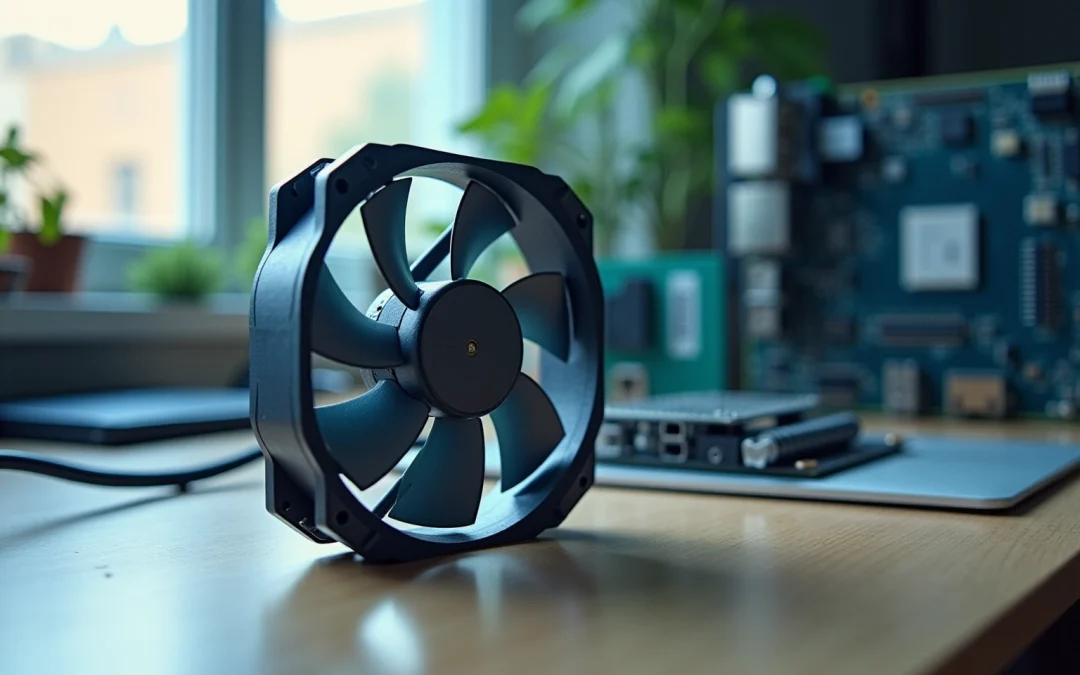Overview
The article addresses the critical characteristics and applications of DC fan blowers in the electronics sector, underscoring their pivotal role in effective thermal management.
DC fan blowers are indispensable for sustaining optimal temperatures within electronic devices. Their high airflow rates, low noise levels, and energy efficiency are essential for the performance and longevity of components such as CPUs and GPUs.
Understanding these attributes not only highlights their importance but also illustrates the necessity for integrating DC fan blowers into electronic systems to enhance operational efficiency and reliability.
Introduction
In today’s fast-paced technological landscape, the demand for efficient cooling solutions in electronics has reached unprecedented levels. As devices continue to shrink in size while simultaneously increasing in power, the need for effective thermal management becomes paramount.
Enter DC fan blowers—essential tools that provide a remarkable blend of high airflow, low noise, and energy efficiency. But what distinguishes these devices within the realm of electronic cooling systems?
This article will explore the defining characteristics, operational mechanisms, and diverse applications of DC fan blowers, unveiling their crucial role in maintaining the optimal performance and longevity of modern electronic devices.
Define DC Fan Blower: Key Characteristics and Functionality
A dc fan blower is an electromechanical apparatus that utilizes direct current (DC) to generate airflow, primarily for cooling functions in electronic systems. Gagner-Toomey Associates, recognized as the world’s largest producer of standard and custom air-movers, specializes in optimizing these tools for performance, efficiency, and low noise. Unlike conventional blowers that often operate on alternating current (AC), the dc fan blower is specifically engineered to function efficiently at lower voltages. This characteristic makes them particularly suitable for battery-operated equipment and applications where energy efficiency is paramount.
Key characteristics of a DC fan blower include:
- Its capacity to deliver high airflow rates
- Maintain low noise levels
- Feature compact designs
Functionally, dc fan blowers play a critical role in dissipating heat generated by electronic components, thereby ensuring optimal performance and longevity of devices. Gagner-Toomey Associates provides a comprehensive product line of , ranging from 15 to 280mm, alongside Centrifugal Blowers, from 15 to 225mm. This diverse range caters to various industrial applications, including electronics and automotive sectors.
Additionally, most models offer IP protection upon request, further enhancing their adaptability to different environments. This flexibility not only meets industry standards but also addresses specific cooling needs across multiple applications.
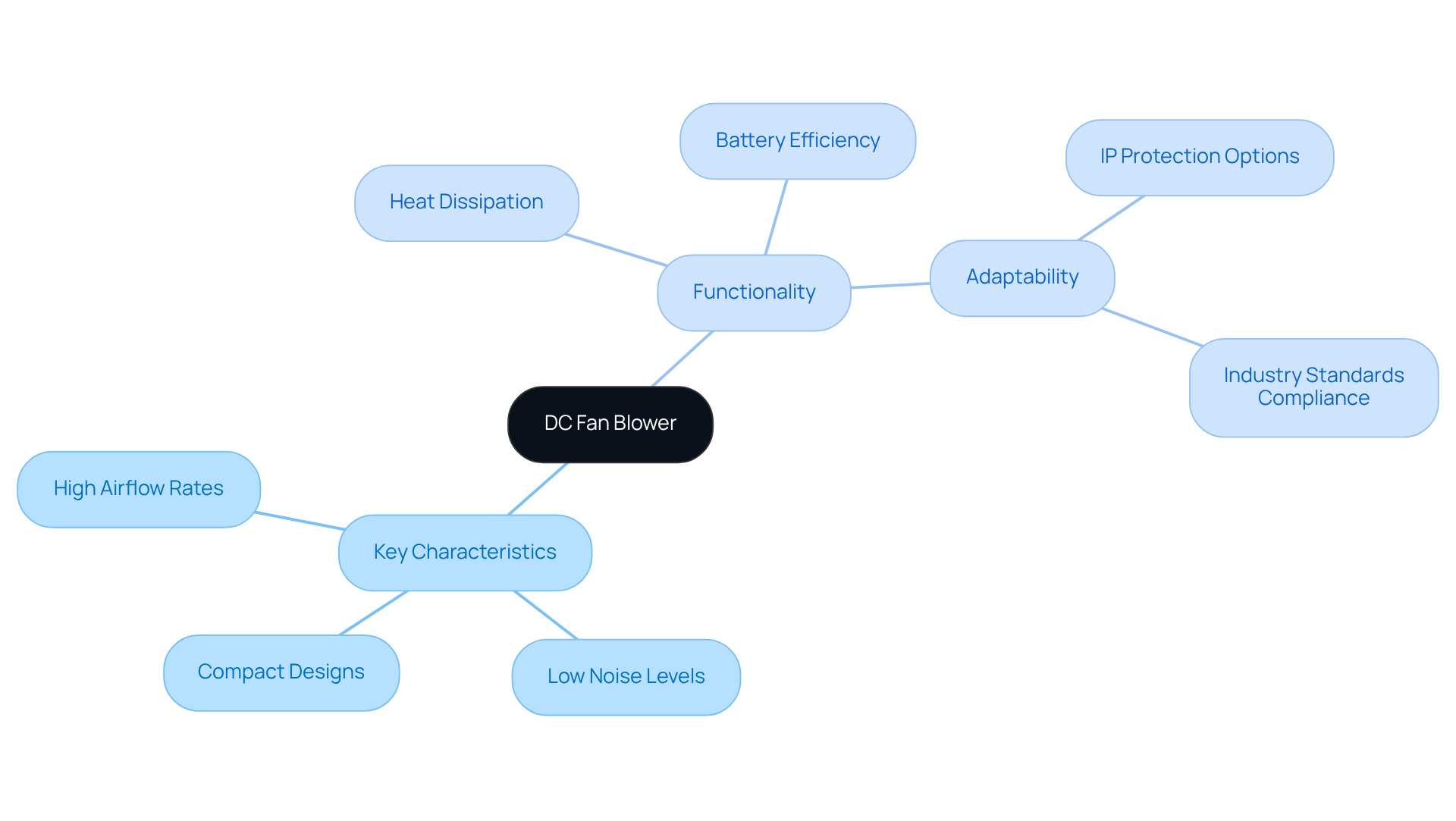
Explore the Role of DC Fan Blowers in Electronics Cooling Systems
DC fan blowers are indispensable in electronic heat management systems, effectively aiding in the removal of heat from critical components such as CPUs, GPUs, and power supplies. The necessity of effective thermal management cannot be overstated; it is vital to prevent overheating, which can result in performance degradation or catastrophic failure. By ensuring optimal operating temperatures, DC fan units significantly enhance the reliability and efficiency of electronic devices. Their innovative design permits , allowing for precise cooling of specific components, thereby optimizing cooling efficiency. Moreover, the low power consumption of a DC fan blower renders it ideal for applications where energy efficiency is of utmost importance.
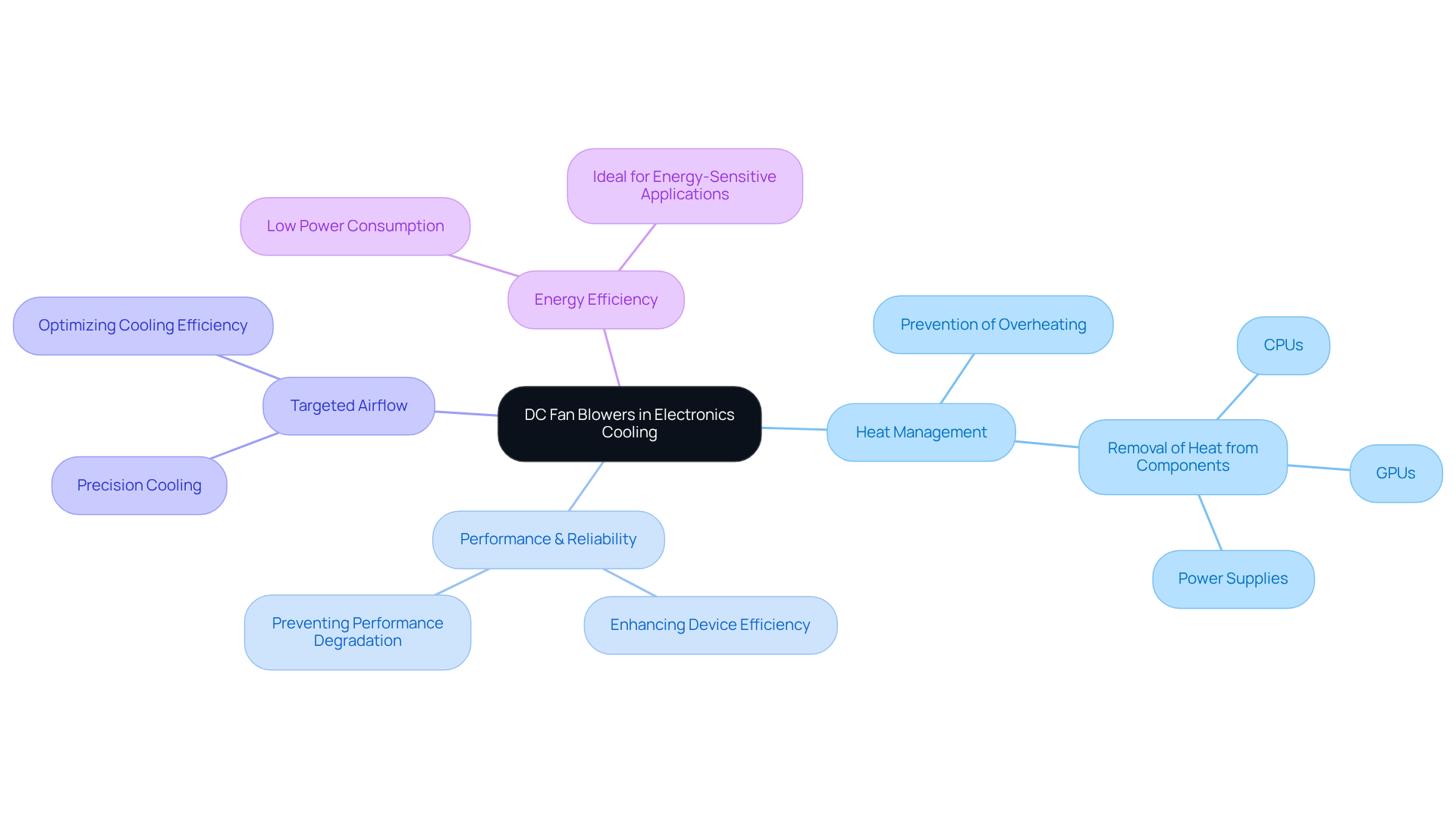
Examine Technical Specifications: How DC Fan Blowers Operate
DC fan devices operate based on the principles of electromagnetism, where an electric current generates a magnetic field that drives the rotation of blades. Key technical specifications include:
- Voltage rating
- Airflow (measured in cubic feet per minute, CFM)
- Static pressure
- Noise level (measured in decibels, dB)
- Power consumption (measured in watts)
For instance, a typical DC fan may function at 12V, delivering airflow rates between 20 to 100 CFM, with noise levels as low as 20 dB. These devices are noted for their energy-saving capabilities compared to older models, making them an efficient choice for diverse applications. Understanding these specifications is crucial for selecting the right DC fan blower for specific needs, ensuring it meets temperature control requirements without compromising energy efficiency.
Sectors such as IT and healthcare rely on DC fan blower devices for effective temperature regulation, benefiting from their energy-efficient features and low maintenance demands due to brushless motor technology. Leading manufacturers like Delta Fan, Ebmpapst, and Nidec Corporation are recognized for , offering options that cater to various operational needs.
Additionally, customization possibilities enable adjustments in size, airflow, and voltage, enhancing versatility. It is also vital to consider after-sales support, which plays a significant role in maintaining fan performance. Grasping these factors not only assists in fulfilling cooling requirements but also contributes to long-term cost savings and environmental sustainability. For example, Sofasco International produces energy-efficient DC fan blowers that necessitate minimal maintenance, exemplifying the practical advantages of these specifications.
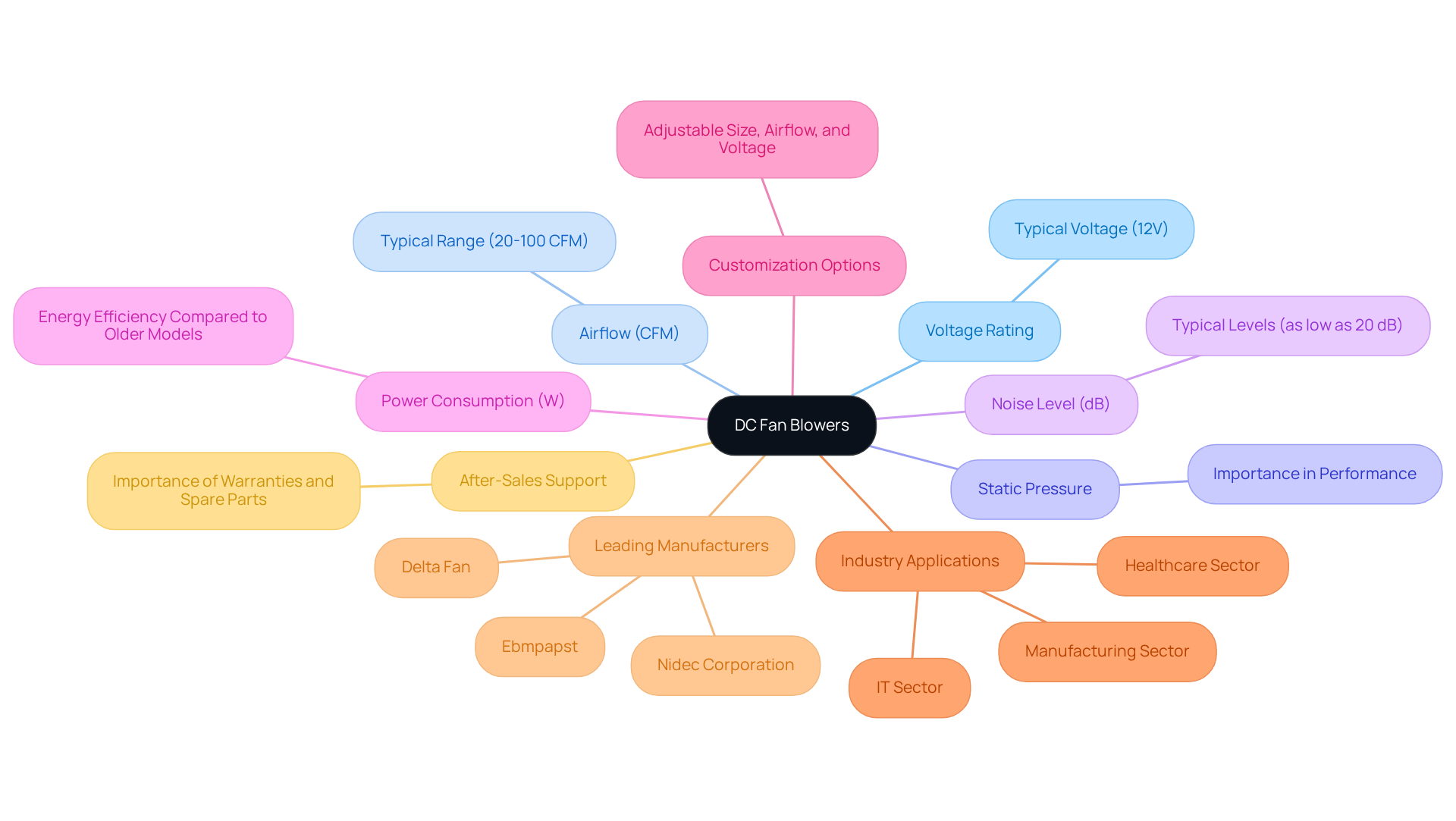
Identify Applications: Where DC Fan Blowers Are Used in Electronics
play a crucial role in the electronics sector, addressing the pressing need for efficient heat dissipation. Their common applications include:
- Cooling systems for computers
- Servers
- Telecommunications equipment
Optimal temperature regulation is essential for performance. Furthermore, these devices are integral to consumer electronics such as:
- Gaming consoles
- Televisions
- Audio equipment
Maintaining ideal temperatures not only enhances performance but also extends the longevity of the devices. Beyond consumer electronics, the versatility and critical importance of the DC fan blower are highlighted as they find their place in:
- Automotive electronics
- Medical devices
- Industrial machinery
This ensures the reliability of electronic systems across a multitude of sectors.
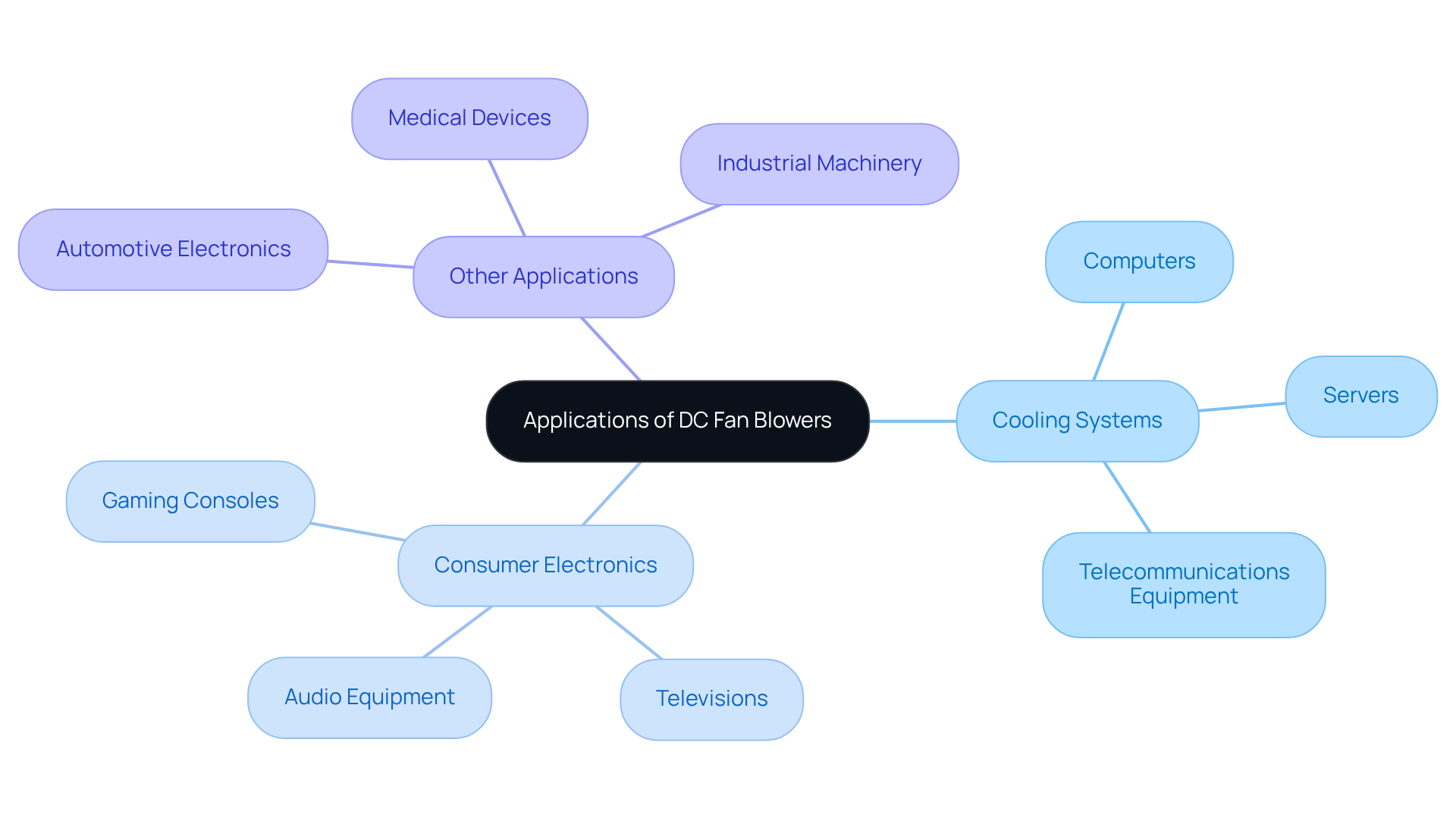
Conclusion
DC fan blowers constitute a pivotal technology within the electronics sector, specifically engineered to enhance cooling efficiency and promote energy conservation. Their distinctive capacity to operate on direct current empowers them to excel in applications where low voltage and minimal noise are paramount. By effectively managing airflow, these devices are crucial in ensuring electronic systems function optimally, thereby extending the lifespan of components and bolstering overall performance.
This article explores various facets of DC fan blowers, emphasizing their key characteristics such as high airflow rates, low noise levels, and compact designs. It highlights their significance in electronic cooling systems, where they alleviate the risks of overheating in essential components. Additionally, the operational mechanics of DC fan blowers are examined, alongside their technical specifications that assist users in selecting the most suitable models for specific applications. The diverse applications of these blowers across sectors ranging from consumer electronics to industrial machinery further underscore their versatility and importance.
In conclusion, the role of DC fan blowers transcends mere cooling; they are integral to the reliability and efficiency of contemporary electronic devices. As technology continues to advance, the demand for effective thermal management solutions will only intensify. Embracing the advantages of DC fan blowers not only fosters enhanced performance but also bolsters sustainability efforts by reducing energy consumption. Adopting these innovative solutions is essential for anyone aiming to optimize their electronic systems and secure long-term operational success.
Frequently Asked Questions
What is a DC fan blower?
A DC fan blower is an electromechanical device that uses direct current (DC) to generate airflow, primarily for cooling electronic systems.
How does a DC fan blower differ from conventional blowers?
Unlike conventional blowers that operate on alternating current (AC), DC fan blowers are engineered to function efficiently at lower voltages, making them suitable for battery-operated equipment and energy-efficient applications.
What are the key characteristics of a DC fan blower?
Key characteristics include the ability to deliver high airflow rates, maintain low noise levels, and feature compact designs.
What is the primary function of a DC fan blower?
The primary function of a DC fan blower is to dissipate heat generated by electronic components, ensuring optimal performance and longevity of devices.
What types of DC fan blowers does Gagner-Toomey Associates offer?
Gagner-Toomey Associates offers a range of DC input Tube Axial fans from 15 to 280mm and Centrifugal Blowers from 15 to 225mm.
In which industries are DC fan blowers commonly used?
DC fan blowers are commonly used in various industrial applications, including the electronics and automotive sectors.
Do DC fan blowers have any protective features?
Yes, most models offer IP protection upon request, enhancing their adaptability to different environments and meeting industry standards.

